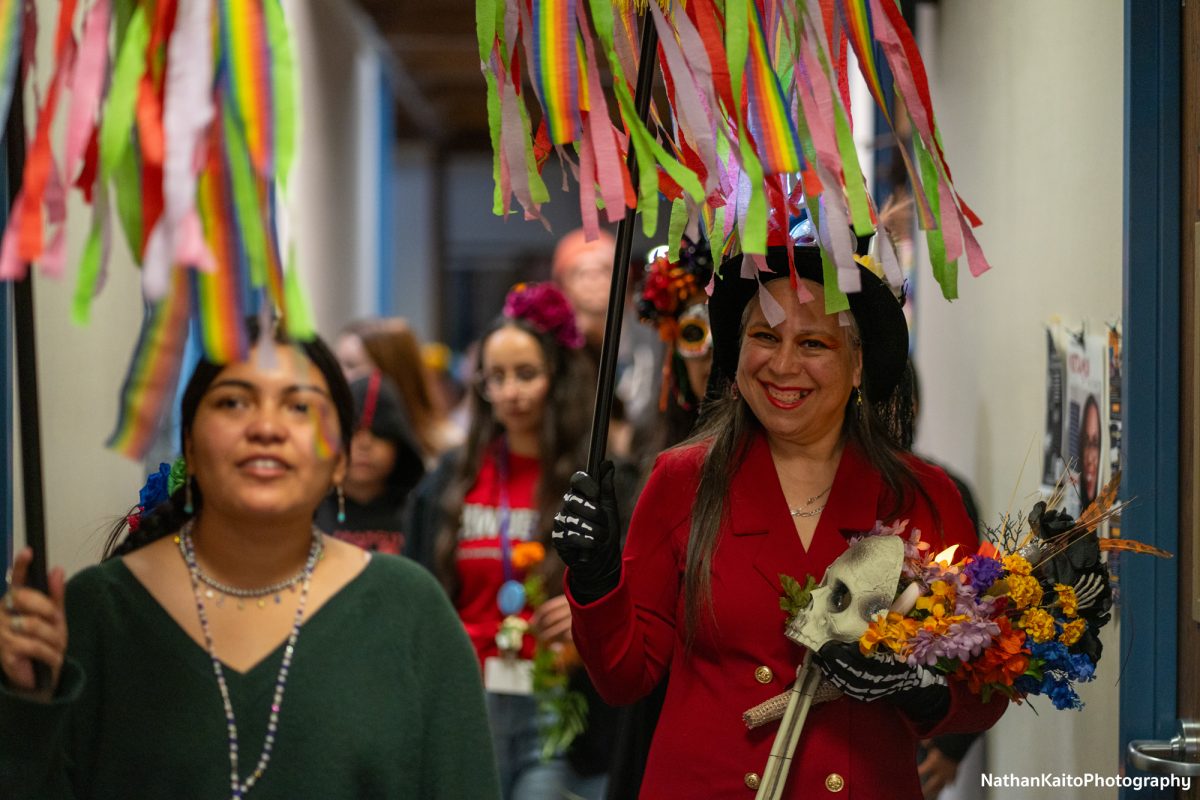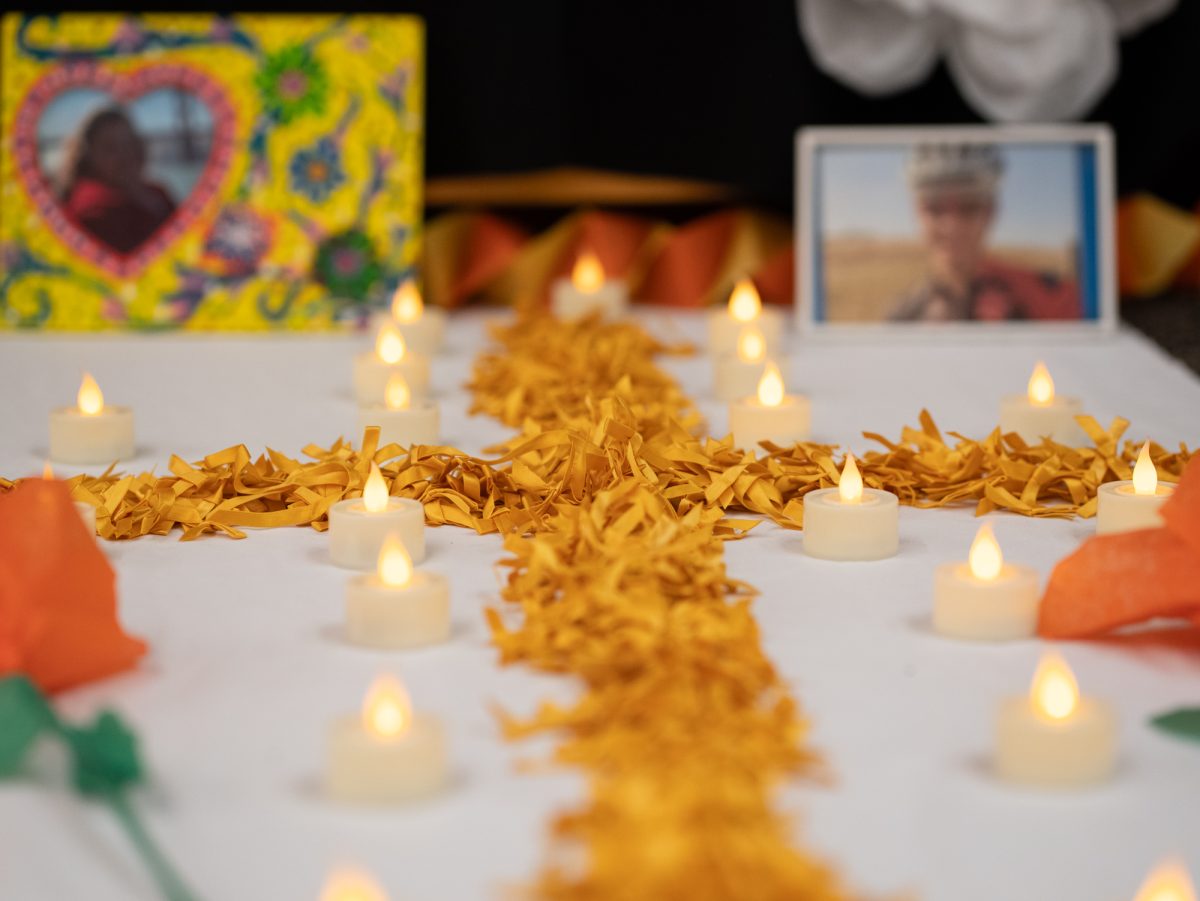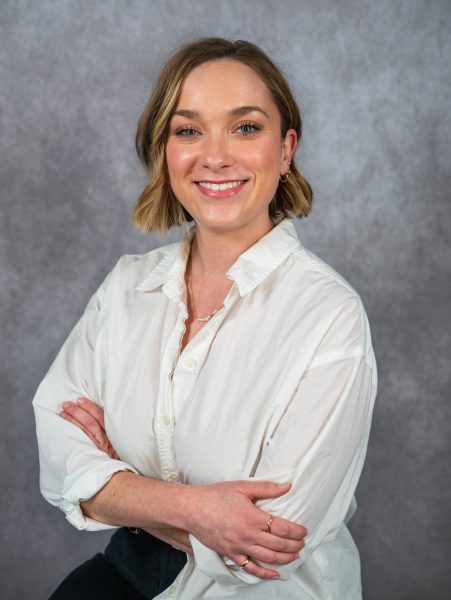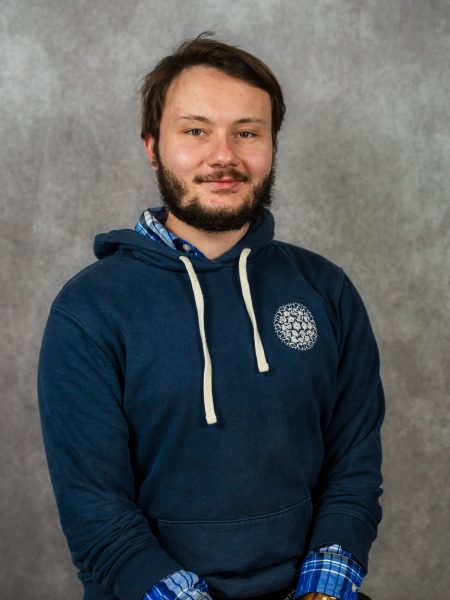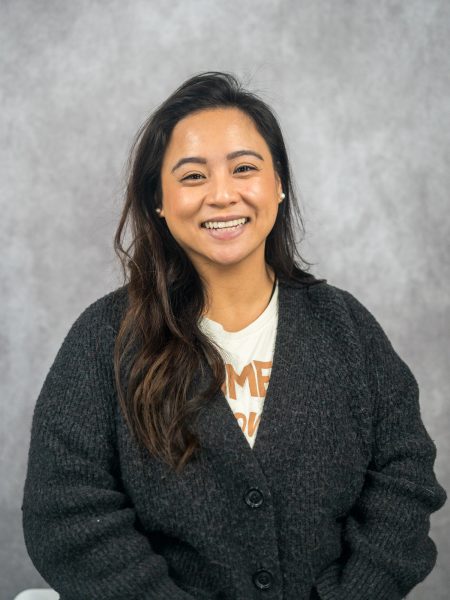Santa Rosa Junior College and Latino communities joined together to celebrate Día de Muertos on Wednesday, Oct. 23, at the Bertolini Dining Hall.
The space was filled with artists, Calavera face painters, food, and music that entertained attendees before a guided procession around campus. The procession visited various ofrendas—altars built to remember the dead that display flowers, candles and photos of lost loved ones.
The Calavera face paint, a skull motif, is a symbol for Día de Muertos. Calavera are commonly seen on Catrín and Catrina’s. Originally a satirical drawing of a skeleton in formalwear produced by Mexican Illustrator José Guadalupe Posada in 1910, then further popularized by Mexican artist Diego Rivera in the 1940s, their depiction is now married to the holiday. Today’s Catrin and Catrina paint skulls on their faces and wear beautiful flower crowns or wide-brimmed hats and costumes inspired by 1900s Mexico.
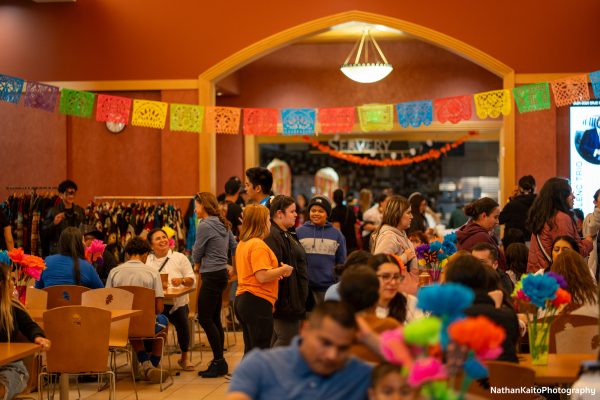
Approximately 150 guests of all different backgrounds filled the procession during its peak.
The short procession began in the Newman Auditorium. Upon entering, volunteers from Movimiento Estudiantil Chicana de Aztlán (MEChA) and the Intercultural Center handed out single stems of marigolds. The flower is traditionally associated with the holiday and is strung among most altars due to its spiritual significance. Marigolds’ bright orange-yellow color and bold musky smell are believed to help guide the spirits of the dead back home to their loved ones.
“It’s to bring all the communities around to gather at the SRJC. I brought my daughter. It’s for our kids as well,” said Deborah Virgen, a member of ESL Moves and MEChA, two clubs at SRJC.
Jessica Freedenburg, a kindergarten teacher in Monte Rio, brought her family to observe the ofrendas and celebrate. They have family in Oaxaca and had the privilege of celebrating Día de Muertos there last year. “It was amazing, it was so beautiful…the cemeteries at night with the candles, flowers and art,” Freedenburg said.
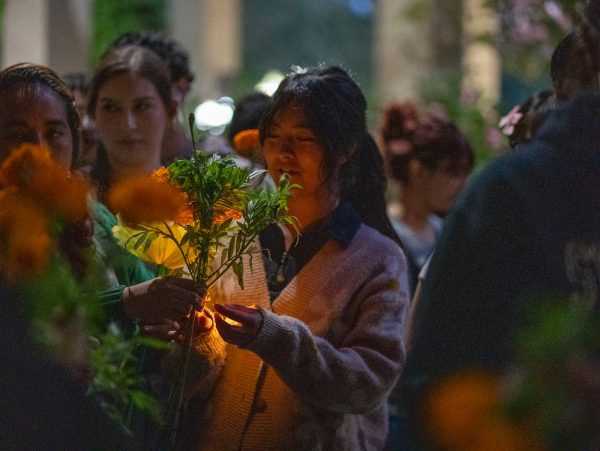
Freedenburg looked forward to seeing how SRJC’s celebrations compared to her time in Mexico and was hoping for inspiration for an ofrenda she is working on for her students at Monte Rio Elementary School.
While the procession was slowly moving through the library, a young Catrina observed an ofrenda. It was the first time Vanessa, 14, was dressed in the Catrina style.
Her face was painted with a skull motif, and she wore a handmade outfit with an ornate green top and a long black skirt. Vanessa and her mother made the outfit in one day. Vanessa’s mom was a former JC student and MEChA and she thought it was important to introduce her children to the SRJC community through events such as this.
Circling through the library and returning to the Bertolini Dining Hall, volunteers offered cups of warm champurrado in varying shades of lighter chocolate to a luscious and more condensed dark chocolate. Champurrado is a delicious hot, milky, chocolatey drink thickened with corn flour. “Each family has its own recipe,” explained a young girl serving the drinks. The warm drink was served with pan de muerto, one of the many handmade delicacies specific to the holiday.
Marta Rodriguez and Brenda Cruz, put finishing touches on the Santa Rosa High School’s altar, decorated with photos, pan de muerto, and garlands of peanuts and marigolds. Rodriguez detailed how the community typically spends a lot of time preparing for the holiday.
Traditionally in Oaxaca, it was the children’s job to string fruit, such as tejocote, Mexican hawthorn, and peanuts, Rodriguez explained. These garlands decorated most altars at the event. Rodriguez continued by saying that the women would cook a week or more in advance to make everything, from molé to pan de muerto to champurrado/atole.
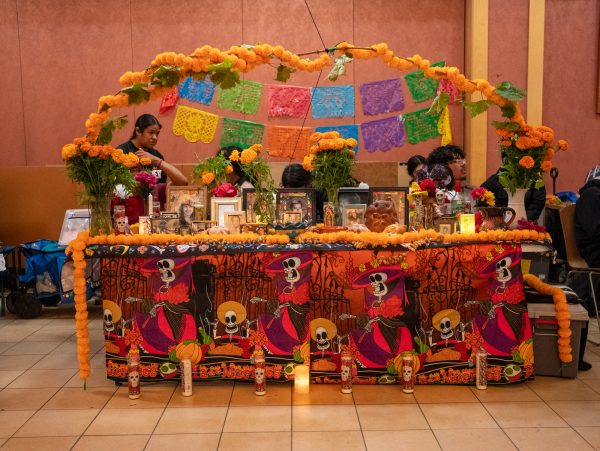
Upon arrival back to Bertolini, guests were serenaded with beautiful Mexican music, all thanks to local musician Vanessa Dominguez. After the attendees connected back with friends and family in the hall, it was time for the Catrina and Catrin contest.
The guests that dressed up paraded around the dining hall, allowing everyone a close-up view of their hard work. The winning Catrina and Catrin were decided by amount of applause, which brought the hall into an uproar for the winners who received gift cards for their costumes.
Daniela Guerra Marvin, an SRJC student in biochemistry who was the runner-up in the contest, wore an outfit representing different parts of her life. Her mother gave her a shirt from the Yucatan Peninsula embroidered with roses and vines for Christmas; a long, beaded rosary also came from her mother; another rosary came from a cathedral in New Orleans. She painted her face herself, with roses on her chin and crystals on her forehead.
She was honoring her grandmother today, “and the people that came before me, because without them, I wouldn’t be here,” she said.
Siblings Armando and Emily Jimendez attended the event to connect more with their culture. In their experience, Día de Muertos is more heavily celebrated in Southern Mexico, and their family originates from Northern Mexico. The siblings were looking forward to reconnecting with their heritage at this event.
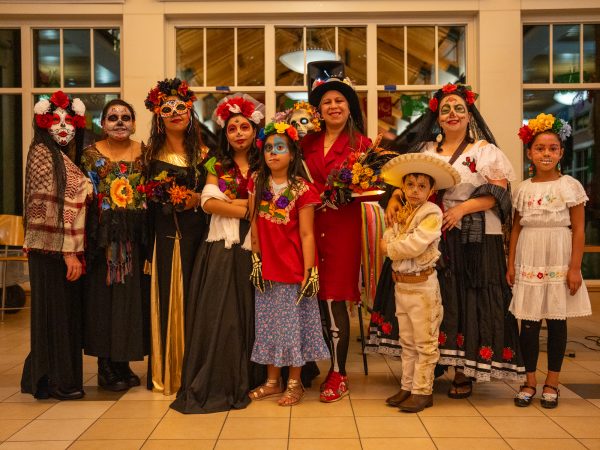
Mario Castillo-Guido arranged small stress dolls with flyaway orange hair and set out postcards with suicide prevention resources at the Buckelew Programs altar. Castillo-Guido honors those who committed suicide, as well as those who survived suicide, like his son. He understands the challenges and obstacles facing Latino youth and advocates for their support. During the pandemic, Castillo-Guido and others organized Comida Para Todos to help meet community members’ basic needs of food, diapers, and masks.
The evening was a beautiful, peaceful, yet lively gathering of a diverse group of people at SRJC. The ofrendas can be found at the student services desk in Bertolini Hall, the tutorial center in the library and Newman Auditorium until Nov. 1.
“We believe that it is important for our communities to see SRJC valuing and honoring their cultural traditions. Creating events like this demonstrates to students how they can bring their full selves to campus and they should be respected and celebrated as such,” Malena Hernández, a coordinator with the Intercultural Center said after the event. The event comes as a prelude to Día de Muertos, which is recognized and celebrated for many days before the official day.
Additional reporting by Amy Moore




